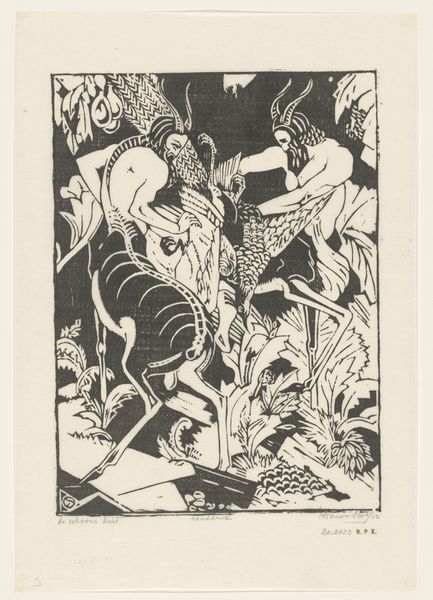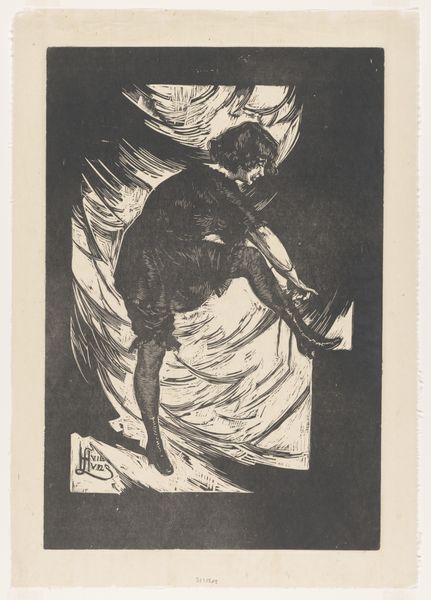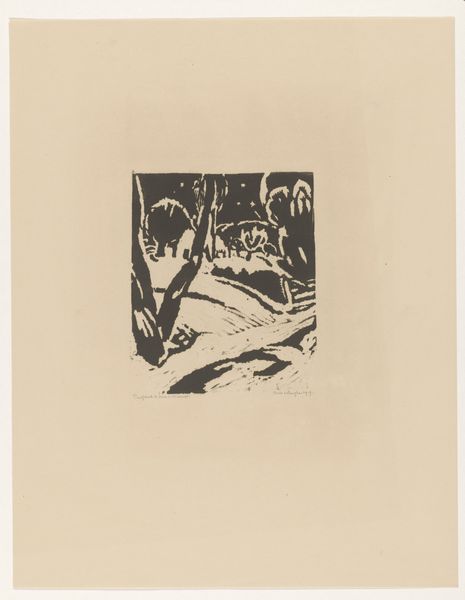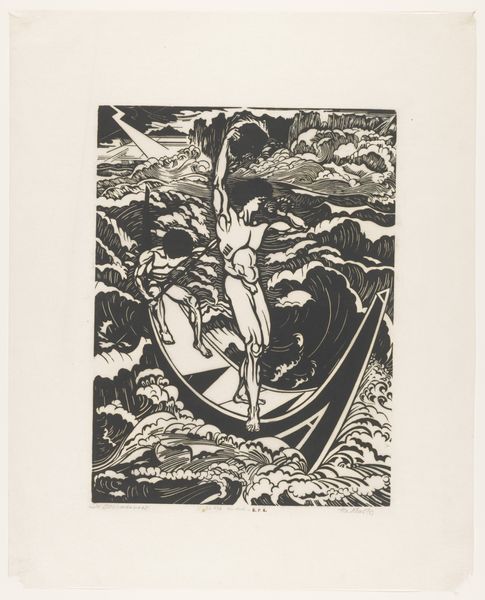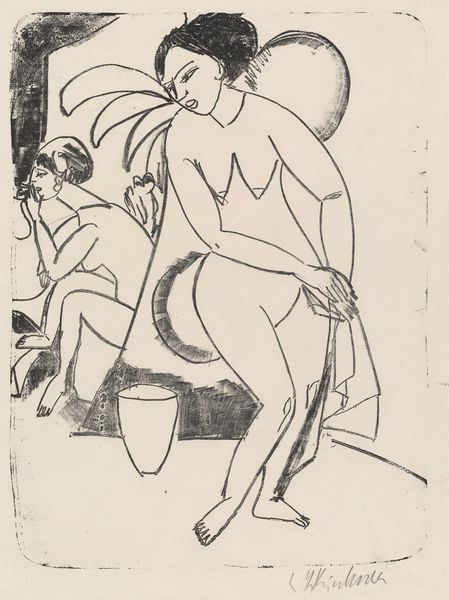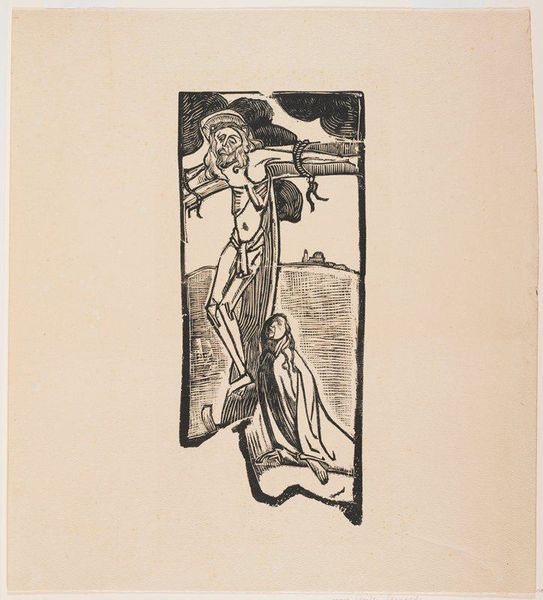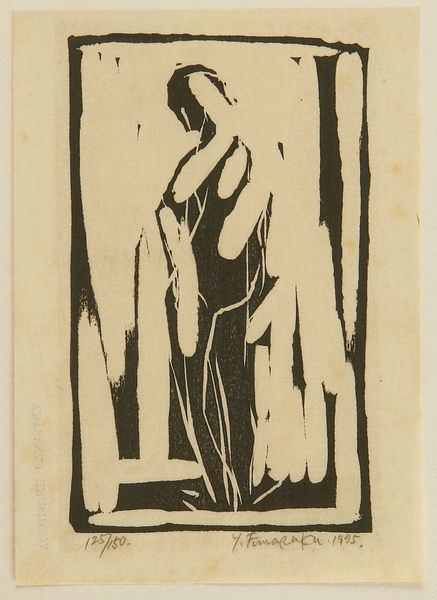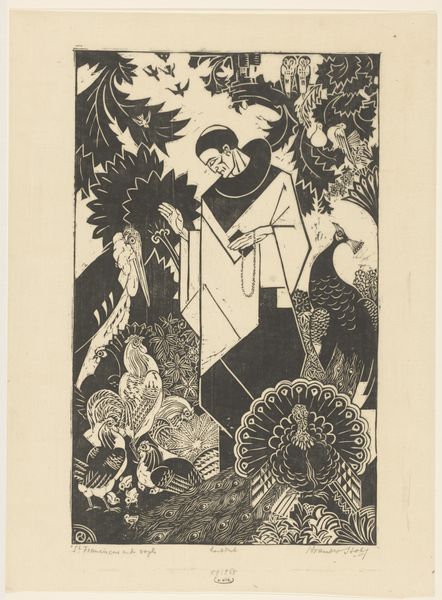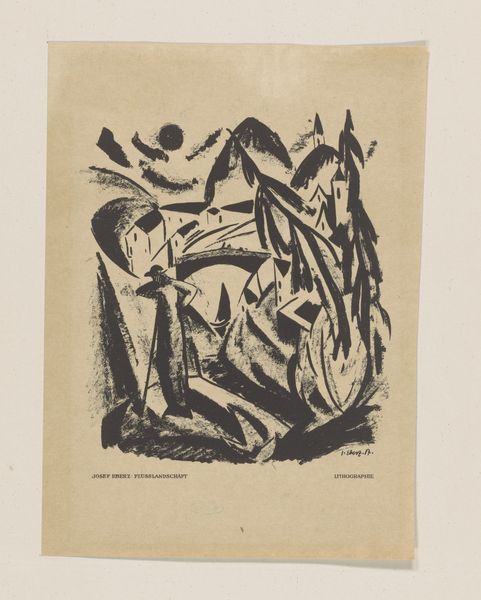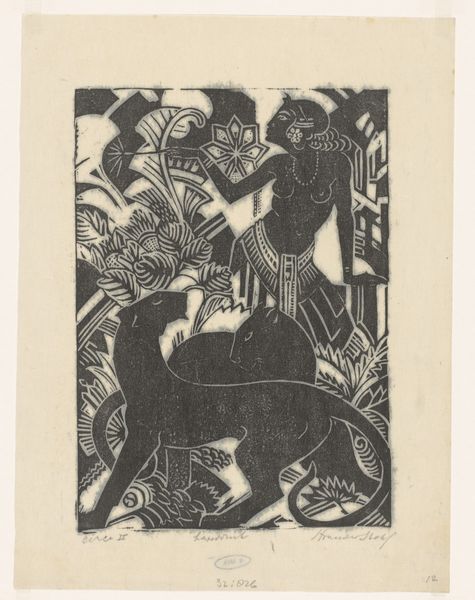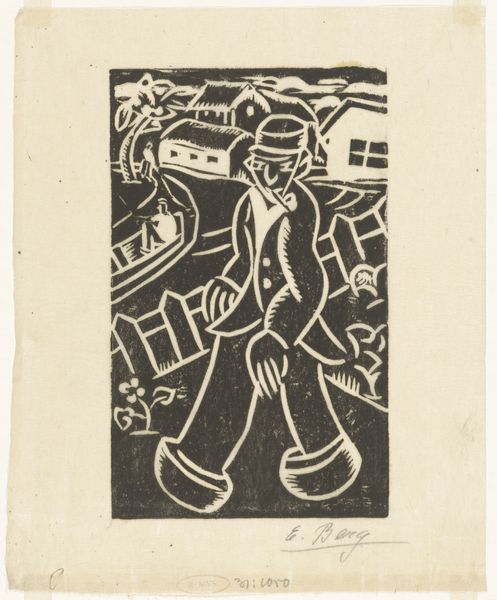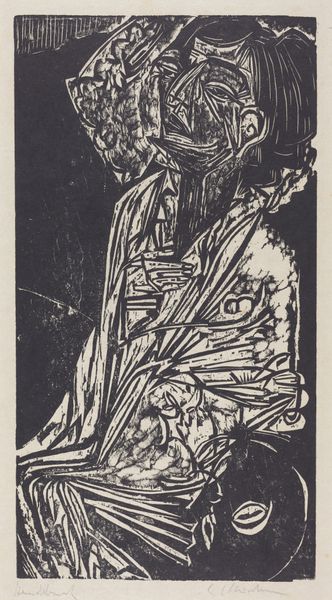
print, woodcut
#
narrative-art
# print
#
landscape
#
figuration
#
expressionism
#
woodcut
Dimensions: height 335 mm, width 245 mm
Copyright: Rijks Museum: Open Domain
Curator: This woodcut, titled "Zeeschuimers," or "Sea Skimmers" in English, was created around 1924 by Johannes Frederik Engelbert ten Klooster. It depicts a dynamic coastal scene rendered in stark black and white. Editor: My first impression is the energy; the composition crackles with the dynamism of a storm at sea. There’s almost a theatricality to the postures of the figures. Curator: Absolutely. The prominent figure in the foreground is almost like a symbolic representation of maritime power—standing firm amidst the chaotic elements, and their positioning in relation to the horizon implies a complex understanding of place. Editor: But there's a tension present. These "Sea Skimmers," as the title suggests, seem caught between adventure and precarity. The harsh lines of the woodcut, that high contrast, speak to the raw reality of their lives. Do we read a critique of the labor, maybe even exploitation? Curator: The stylistic echoes of German Expressionism lend a definite intensity, I agree, underscoring the weight and the struggle inherent in a life tied to the sea. There’s an intentional roughness, a directness, and this can evoke a sense of universal struggles that we can associate with figures throughout history. Editor: It does feel evocative beyond just a historical snapshot. The simplified forms almost lend themselves to allegorical interpretations. Who were these 'Sea Skimmers', really, in the social landscape of the artist's time? Marginalized communities reliant on the sea for survival, perhaps? Curator: Ten Klooster was very much influenced by symbolism that emphasized finding profound meaning in everyday life, which is exactly the symbolism the artist tried to represent here through the rough carving of figures amidst crashing waves. It reminds us how such elemental forces as the ocean often bear great historical symbolism. Editor: Understanding it this way transforms the woodcut from just an aesthetic piece into a mirror reflecting both social realities and human resilience. It underscores how crucial art is to provoke dialogue and deepen understanding, connecting us with these communities of the past, present, and potentially the future. Curator: A powerful observation, yes. "Zeeschuimers" encourages us to reconsider the layers of meaning in seemingly straightforward imagery. Editor: It also reinforces the need to interpret the imagery and symbology embedded within historical events, not simply take what is rendered at face value. This makes the viewing experience both more personally impactful, and culturally significant.
Comments
No comments
Be the first to comment and join the conversation on the ultimate creative platform.

